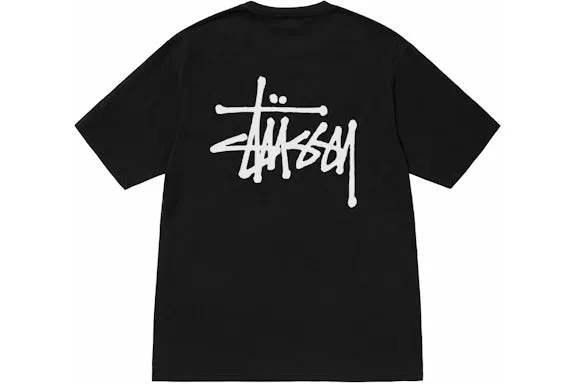Why CE Certification Matters for Your Toy Business
If you’re in the toy business, you’ve probably heard “CE Certification” tossed around like confetti at a kid’s birthday party. But what does it really mean? And why should you care? Whether you’re a small toymaker crafting wooden trains in your garage or a big player designing the next viral fidget toy, CE Certification is your golden ticket to selling legally in Europe. Let me walk you through why this matters, how to get it, and what it means for your business—without making your head spin.
So, What’s This CE Certification Anyway?
CE stands for Conformité Européenne—fancy French for “European Conformity.” It’s a little logo you put on your toy to say, “Hey, this product meets all the safety, health, and environmental standards of the European Union.” Think of it like a passport for your toys to enter the EU market. Without CE Certification, you’re stuck at the border, and nobody wants that.
Here’s the thing: the CE mark isn’t just a sticker. It’s a promise. You’re telling retailers and parents that your toy won’t choke, poison, or harm a child. And in a world where parents are eagle-eyed about safety (rightfully so!), that trust is everything. Ever wonder why some toys fly off the shelves while others gather dust? CE Certification can make or break your brand’s reputation.
Why Toys Need Extra Scrutiny
Toys aren’t just any product. They’re handled by kids—our most precious, curious, and sometimes chaos-inducing humans. The EU takes toy safety seriously, and CE Certification shows you’ve done your homework. It ensures that teddy bear’s eyes won’t pop off mid-cuddle or that plastic dinosaur isn’t laced with harmful chemicals like phthalates.
You know what? It’s not just about avoiding trouble (though that’s a big plus). It’s about peace of mind—for you and the parents buying your toys. Imagine the relief of knowing your product won’t end up in a recall headline. That’s what CE Certification helps deliver.
The Nitty-Gritty: What Does CE Certification Involve?
Getting CE Certification isn’t a walk in the park, but it’s not rocket science either. It’s a process, and like any good game, you just need to know how to play. Here’s how it breaks down:
- Know the Standards: You’ll need to meet EU safety standards, covering mechanical, flammability, and chemical safety. These are your playbook—study them like you’re prepping for the toy industry Super Bowl.
- Test Your Toys: Send your products to a certified lab for testing. They’ll check for things like small parts (choking hazards), heavy metals (like lead), and even how flammable that plush unicorn.
- Document Everything: You’ll need a Technical File—a dossier of test results, design specs, and risk assessments. Think of it as your toy’s biography, proving it’s safe and compliant.
- Self-Declare or Get Notified: For most toys, you can self-declare the CE mark once you’ve got passing test results. For high-risk toys (like those with chemicals or electronics), a Notified Body—an official third-party auditor—has to sign off.
- Slap on the Mark: Once approved, you can add the CE logo to your packaging, labels, or even the toy itself. But don’t get cocky—misusing the mark can land you in hot water.
Sounds like a lot, right? It is, but it’s worth it. A single misstep could mean a product recall or worse, a hit to your brand’s trust.
The Emotional Weight of Getting It Right
Let’s take a step back for a second. Imagine you’re a parent, picking out a toy for your kid’s birthday. You’re scanning the box, looking for that CE Certification mark. It’s not just a logo—it’s a signal that someone cared enough to make sure this toy won’t hurt your child. That’s the emotional core of why this matters. As a toymaker, you’re not just selling products; you’re selling joy, imagination, and safety. Mess that up, and you’re not just losing sales—you’re breaking trust.
I once talked to a small business owner who skipped CE Certification to cut costs. Big mistake. One batch of non-compliant toys led to a recall, angry customers, and a PR nightmare. He told me, “It felt like betraying every kid who loved our toys.” Don’t be that guy.
The Cost of Compliance (and Why It’s Worth It)
Let’s talk money for a minute. CE Certification isn’t cheap—testing can be pricey, depending on your toy’s complexity. Add in the cost of a Technical File and maybe a consultant to guide you, and it’s a real investment. For a small business, that can feel like a punch to the gut.
But here’s the flip side: the EU market is massive—27 countries, millions of consumers. Without CE Certification, you’re locked out. Plus, retailers like Amazon or Smyths Toys won’t touch your product without it. The cost of not getting certified? Lost sales and a tarnished reputation. Weigh that against the upfront expense, and it’s a no-brainer.
A Quick Detour: The Global Picture
Here’s a fun fact: CE Certification isn’t just an EU thing. Countries like Norway, Switzerland, and even Turkey recognize it. And while the U.S. has its own standards, CE Certification can give you a head start on global compliance. It’s like getting a two-for-one deal on safety cred. Plus, with trends like eco-friendly toys on the rise, a CE mark can dovetail with sustainability claims, making your brand look even better.
Common Pitfalls and How to Dodge Them
Nobody said this process was all fun and games. Here are some traps to avoid:
- Skipping Tests to Save Time: Don’t assume your toy is “obviously safe.” Even simple stuffed animals need chemical tests. One missed phthalate, and you’re done.
- Poor Documentation: Your Technical File needs to be bulletproof. Missing test reports or sloppy risk assessments can delay approval.
- Ignoring Updates: Safety standards evolve. A toy compliant today might not pass tomorrow. Stay on top of changes via sites like the European Commission’s website.
- Using Shady Labs: Stick with accredited labs. A cheap test from a sketchy source won’t hold up if regulators come knocking.
I heard about a company that thought they could “wing it” with a generic CE mark. Customs caught it, their shipment got seized, and they lost months of sales. Moral of the story? Do it right the first time.
Wrapping It Up: Your Path to CE Success
Getting CE Certification feels like jumping through hoops—and it kind of is. But it’s also your chance to prove your toys are safe, build trust with customers, and unlock the massive EU market. Start early, work with pros, and keep your paperwork tight. It’s not just about following a process; it’s about creating toys that spark joy without sparking worries.
So, what’s stopping you? Get that CE Certification, and let your toys shine on shelves across Europe. Your business—and the kids playing with your creations—will thank you.


